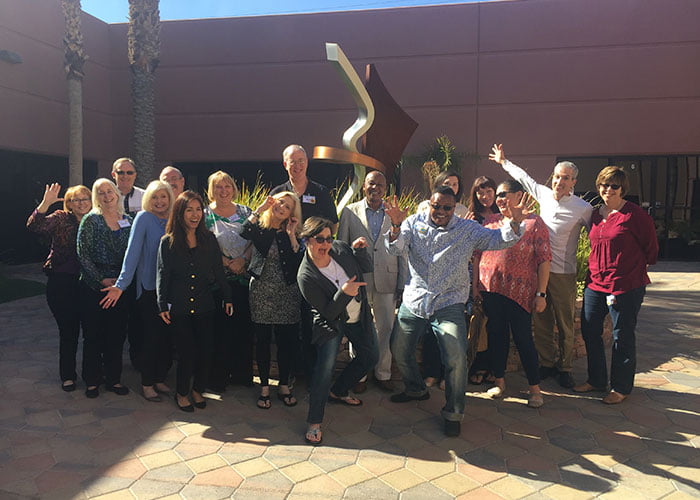In 1814, Ivan Krylov (1769–1844), poet and fabulist, wrote a fable entitled “The Inquisitive Man”, which tells of a man who goes to a museum and notices all sorts of tiny things, but fails to notice an elephant. Since then, we often refer to something difficult, enormous and obvious that’s not spoken about, as the elephant in the room.
Sometimes people choose AI because they (mistakenly) assume we won’t mention the elephant in the room. People may say one thing (“we really get on as a team!”) while the atmosphere suggests something else (no-one smiles). Perhaps the history of what has happened in an organisation is never referred to. Or we sense an uneasy power differential: some people are always absent / silent / off-camera, while others are always first to speak.
Elephants represent many things: they’re symbols of luck and prosperity; powerful beings using their mighty strength to remove obstacles and negative forces. Indigenous to Africa and Asia, the animals have special significance here. The Hindu god Ganesha – god of beginnings – is seen as the remover of obstacles and remembered before starting any major endeavour. Many African cultures revere the elephant for its size, longevity, stamina, mental faculties, cooperative spirit and loyalty. Here in South Africa, elephant tusks in our coat of arms represent wisdom, strength, moderation and eternity.¹
Animal whisperers know communication with animals requires a finely tuned intuition, deep listening and befriending the being. Therein lies the rub: what is our relationship with the “elephant” like? Do we wish it away, and prefer it gone? Or do we value what it is trying to reveal?
Instead of being frightened by its power, the AI facilitator appreciates what the elephant in the room has to teach about what matters most to the collective, in the present moment. When we listen, it often shows us the very thing that will illuminate the path ahead. By attuning to our intuition and reading the room, we pay close attention to:
- those who are silent
- we don’t assume to know what that means, but keep checking and inviting folks to give voice to their thoughts
- those who take the lead
- encouraging them to create space for everyone
- and to be intentional about the example they set
- contradictions which could lead to misunderstanding
- naming these and inquiring what is really happening
- re(de)fining our Appreciative Agreements:
- what we all ideally want, and
- how we co-create that in a way that brings out the best in everyone
- if we sense unsaid things hanging in the air, we may respectfully and moderately inquire about any elephants in the room
- doing this in a confidential / anonymised way if necessary
Sometimes the elephant is us! As AI facilitators, our own implicit bias or ignorance may be the unspoken difficulty. Sometimes the simple act of naming that and being open to discovering parts of ourselves others can see better than we can, is where the elephant within becomes our truest friend.²
¹examples from wikipedia
²paraphasing the famous quote by Carl G Jung:
But what if I should discover that … I myself am the enemy who must be loved – what then?
Ezelle Theunissen is a community psychologist and coach supporting individuals, teams and organisations align their values, strengths and unique lived experiences towards making a meaningful difference in the world. Social and environmental justice are close to her heart and she favours whole systems and person-centred approaches.


Add your comment now using your favorite social account or Click Here To Login
